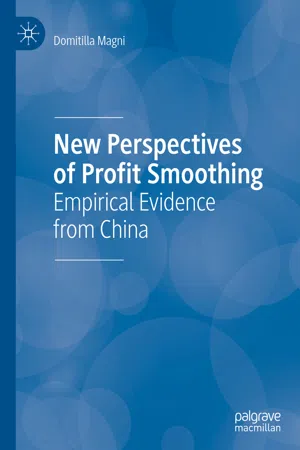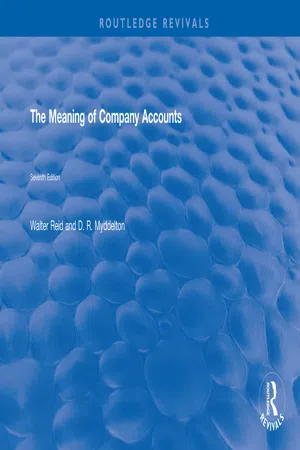Economics
Revenue vs Profit
Revenue refers to the total income generated from sales of goods or services, while profit is the financial gain realized after deducting all expenses from the revenue. Revenue represents the top line of a company's income statement, while profit reflects the bottom line. Understanding the distinction between revenue and profit is crucial for assessing a company's financial performance.
Written by Perlego with AI-assistance
Related key terms
7 Key excerpts on "Revenue vs Profit"
- eBook - ePub
Entrepreneurial Finance
Fundamentals of Financial Planning and Management for Small Business
- M. J. Alhabeeb(Author)
- 2014(Publication Date)
- Wiley(Publisher)
CHAPTER 8PROFIT AND THE COST–VOLUME ANALYSIS8.1 Profit Concept Between Economics and Accounting
There is no doubt that “profit” is the most common and widely used term in the business world. However, the commonality and popularity of the term does not necessarily make it a clear concept with an unequivocal connotation. When the classical economics specified the four major factors of production as land, labor, capital, and entrepreneurial management, it also specified the payments these factors get for their individual contribution in the production process. These payments are respectively: rent, wages, interest, and profit. From here we can conclude that profit is the monetary return to those who initiate and manage the entrepreneurial function of production. If the first three payments (rent, wages, and interests) are made out of the product's sale revenue, the residual, if any, would constitute the fourth payment to the entrepreneur or owner as profit. It is in this sense we get the equality between profit and the net revenue since what we call profit is in fact the surplus over and above the costs of production. These costs may also include taxes, financing cost, and the like. Technically, profit would equal the difference between the total cost of production (TC) and the total revenue brought by the sale of products (TR).It is worthwhile to note here that while the term total revenue is a clear and well-defined concept, the total cost is less clear. Total revenue is the dollar value of the product sold, which is obtained by multiplying the quantity of the units of products sold by the market price per unit. Total cost could include only the explicit cost or the outlay such as the expenditures on the factor of production mentioned earlier and other direct payments such as taxes and interests on loans. If the total cost includes only the explicit cost (EC), the calculated profit would be considered as business or accountant's profit (πa - Colin Barrow, John A. Tracy(Authors)
- 2017(Publication Date)
- For Dummies(Publisher)
Profit, in short, equals what’s left over from sales revenue after you deduct all expenses. This business earned £60,000 on £1,000,000 total sales revenue for the period, which is 6 per cent. Expenses used up 94 per cent of sales revenue. Although it may seem rather thin, a 6 per cent profit margin on sales is typical for many businesses – although some businesses consistently make a bottom-line profit of 10–20 per cent of sales, and others have to be satisfied with a 1 or 2 per cent profit margin on sales revenue. Normal profit ratios vary widely from industry to industry.Businesses that sell services instead of products also use the term sales revenue for gross income (total income before deducting expenses) from sales of their services – but you also see variations on this term. Businesses that don’t sell anything as such – financial institutions that earn investment income, for example – use other terms for their gross income.Notice the following points about the basic profit equation:- Even though you’re deducting expenses from sales revenue, you generally don’t use a minus sign or parentheses to indicate that the expense amount is a negative number (although some people do).
- Using a double underline under the profit number is common practice but not universal. Some people use bold type. You generally don’t see anything as garish as a fat arrow pointing to the profit number or a big smiley encircling the profit number – but again, tastes vary.
- Profit isn’t always called profit . It’s often called net income or the bottom line or – particularly on financial reports intended for people outside the business – net earnings . (Can’t accountants agree on anything ?) Throughout this book, we use the terms net income and profit pretty much interchangeably.
- Sales revenue is the total amount of money or other assets received from sales of the company’s products for the entire year. The number used in the profit equation represents all sales – you can’t tell how many different sales were made, how many different customers the company sold products to or how the sales were distributed over the 12 months of the year.Sales revenue is strictly what belongs to the business and doesn’t include money that anyone else can claim (for example, VAT that the business collects from customers and then remits to the government).Note:
- eBook - ePub
Wealth, Welfare and the Global Free Market
A Social Audit of Capitalist Economics
- Ibrahim Ozer Ertuna(Author)
- 2016(Publication Date)
- Gower(Publisher)
Under the assumptions of the capitalist free market economy, with prices developed in the perfectly competitive markets, theoretically, all the markets are cleared and factors of production receive their fair shares from the output. If the profits are considered as returns to entrepreneurial skills, entrepreneurs will get their proper share from the income generated. So the competitive markets provide full employment and fair returns to all factors. There may not be the problem of generating more or less income. But in real-life cases, there is a dilemma, since profit maximization may not necessarily lead to income maximization. In fact, companies’ decisions for profit maximization may well reduce countries’ national income. These issues will be discussed below. The Definition of Profit The concept of profit has different meanings in economics and accounting. In daily usage, the accounting concept is used. In economics, profit is the residual income left after payments are made for all the factors of production. As we have mentioned above, in free market economies, profits are eliminated: the value added that is created by production is totally distributed to the production factors. Every one of the production factors receives its appropriate returns. Economic theory assumes that firms earn revenues by selling the products they produce. As the firm sells more products, prices decline, so the contribution of additional sales to revenues will decrease. This additional revenue is called “marginal revenue” in economics. The costs of the products sold consist of both the costs of input materials and the factor costs. That is, the costs considered are costs of materials, labor, capital, and all relevant costs pertaining to the production and sale of the products. Again, under the assumptions of economics, the costs of additional production and sale follows first a decreasing, then an increasing trend. The additional cost is called “marginal cost” in economics - eBook - ePub
Accounting 101
From Calculating Revenues and Profits to Determining Assets and Liabilities, an Essential Guide to Accounting Basics
- Michele Cagan(Author)
- 2017(Publication Date)
- Adams Media(Publisher)
Chapter 5Revenues, Costs, and Expenses
New and small business owners tend to track their profit-related accounts very closely. There’s a good reason for this: Without pretty consistent profits, no business can survive for the long haul. Three numbers go into figuring out profits: revenues, costs, and expenses. Every business has revenues (hopefully) and expenses (definitely). Only product-based businesses have costs. In the profit equation, you start with revenues, then deduct costs and expenses. When the result is positive, you have profits. When it’s negative, your company has sustained a loss for the period.In the profit equation, a product-based company with costs will see an additional and crucial subtotal called gross profit (when expressed as a percentage, it’s called gross margin). That number represents the revenue left over once you take out the direct costs of the products you are selling. The gross profit tells you how much you have available to cover all the rest of your expenses, ideally leaving some net profit at the end.In this chapter, you’ll learn everything you need to know about revenues, costs, and expenses, from setting appropriate prices to monitoring and managing product costs to tracking the daily operating expenses. How well a company manages these three income components determines whether they’ll enjoy net profits, or suffer net losses.Passage contains an image
REVENUES
Let’s Make a DealThe goal of every small business is to rack up revenues (also called sales). After all, revenues are the first step on the path to profits. When it comes to recording revenues for accounting purposes, though, it’s not quite as simple as just ringing up a sale. There are different types of sales transactions, and different accounting methods to use. With all the variables surrounding a single sales transaction, the accounting can seem overwhelming, but each transaction really involves just a few basic steps to get the entry recorded and your business another step closer to profitability. - eBook - ePub
New Perspectives of Profit Smoothing
Empirical Evidence from China
- Domitilla Magni(Author)
- 2019(Publication Date)
- Palgrave Macmillan(Publisher)
accounting rules. Many, from the classical economists, have tried to approach the issue of profit and its assessment; others have governed just the accounted nature and added, in an already-busy contest, many theories and definitions on the subject. The evolution of knowledge of business, finance, and economics has allowed an increase in previous studies on profit. Firm and its management have become, over the years, the main focus of managerial analysis, assuming relevance that is both increasingly global and interdisciplinary. The rules and economic directives require continuous management apparatus, overwhelmingly, on the ability to persist over time, in conditions of economic and financial equilibrium. Changing the appearance and nature of the firm changes accordingly the approach of business manager and the role of profit management. Profit has always been analyzed as a residual item in the firm but it changes its shape, and is approached by most as a strategic financial variable.Profit must be closely related to the concept of enterprise, and, in that sense, the very determination of profit justifies the existence of all the firm’s production equipment and is considered indispensable and underlying any business activity. At a firm level, profit is considered as a goal to itself or, alternatively, in connection with other goals such as growth or efficiency.1Before analyzing all the literature and theories of economists who have debated the notion of profit,2 it is necessary to clarify how and through which mechanisms the search for profit can influence the business behaviors, and, finally, it is appropriate to dissolve some inherent nodes both the role of profit as an economic category and its nature.From these initial considerations, it is understood that, in the first place, the subject of the profit should be identified. The need to differentiate, in a theoretical way, the profit from the worker’s wage, from the natural resource owner’s income, and from the interest generated by the liquidity loan, manifests itself at the same time as the historical process of capitalist division of labor.3 In this case, the historical recalls are fundamental: on the one hand, the progressive fragmentation of trades into specializations, the fragmentation of craftsmanship, and the expansion of the merchant system have prompted the making of entrepreneurs-merchants, concerned about buying the products to bring them to the markets and to sell raw material to every single producer, gaining a profit. On the other hand, the separation of workers from work tools, the organization of work in the factory, and the continuous technological changes have overwhelmingly overlooked the overproduction of production, creating new problems with regard to its appropriation and its intended use for purpose consumption or accumulation. In parallel, a new social structure emerged, in which a class—that of entrepreneurs-producers—took the power to decide how, what, and how many to produce.4 - eBook - ePub
- John H Hoag(Author)
- 2012(Publication Date)
- WSPC(Publisher)
To make progress toward understanding how this assumption yields results, we need to move forward with our discussion of the general revenue concepts. We will then develop the revenue concepts for competitive firms, which we will then combine with the cost concepts of the previous chapter to obtain profit. Once we have profit, we can move to profit maximization, the shutdown condition, and the firm’s supply curve. Here we go!5.2 Revenue ConceptsIn this section, we will develop the revenue concepts that will be used for all firms. When we are done with the general concepts, we will turn to the particular case of the competitive firm and see what the revenue curves look like in this case. We begin with definitions.Definition 5.1: Total revenue (TR) is a relationship between output and dollars showing price, P, times quantity sold, X.We can use a formula to find total revenue: TR(X) = P × X.Definition 5.2: Marginal revenue (MR) is a relationship between output and dollars per unit of output showing the change in total revenue due to a change in output at each level of output.We can think of MR in a variety of ways. We can find the MR by using the following formula: . Alternatively, MR is the slope or derivative of TR. You should realize that we can use the fundamental theorem here.Exercise 1. State the fundamental theorem using MR and TR.Definition 5.3: Average revenue (AR) is a relationship between output and dollars per unit of output showing total revenue per unit of output.Again, we can use a formula to compute the average revenue: . But there is one more concept we need, and we define it now, even though it is not a revenue concept.Definition 5.4: Profit (π) is a relationship between output and dollars showing the total revenue minus the total cost at each output.You can see that profit is a total relationship, as it involves output and dollars, not an average or marginal relationship that involves output and dollars per unit of output. You should also see that the profit could be negative; there is nothing in the definition that guarantees profit is positive. We use the word “profit” for both the case where the profit is positive and the profit is negative. You will also note that we have not defined marginal or average profit. We leave that to you now. - eBook - ePub
- Walter Reid(Author)
- 2020(Publication Date)
- Routledge(Publisher)
Section 1 0.Profit measurement: a valuation process?
The way we define profit for a period — ‘sales revenue minus expenses’ — has long been universally accepted. Later in this section we discuss how to measure both sales revenue and expenses.Given the double-entry framework, one can also think of ‘profit’ for a period as being (a) any dividends distributed plus (b) the balance sheet increase in ‘accumulated retained profits’ (= the increase in shareholders’ funds less any capital items). That is true from a purely arithmetical point of view. But firms do not actually calculate profit by ‘deducting’ one balance sheet from another.The assets in balance sheets represent estimates not of value but of recoverable cost. If a firm changes the balance sheet amount of tangible fixed assets (by means of depreciation) or of stocks (by reducing cost to net realizable value) or of debtors (by providing for bad debts), that reduces profits for the period to the same extent. They are two aspects of the same process dealing with incomplete transactions.Thus the example on the next page shows (in £ thousands) an after-tax profit of £100. This is sales of £1 200 less expenses totalling £1100. It also happens to be equal to closing shareholders’ funds of £550 less opening shareholders’ funds of £450; though of course this would not be so if there had been (a) any dividends paid or (b) any capital changes during the year.
Index pages curate the most relevant extracts from our library of academic textbooks. They’ve been created using an in-house natural language model (NLM), each adding context and meaning to key research topics.






